#historian: john julius norwich
Explore tagged Tumblr posts
Text
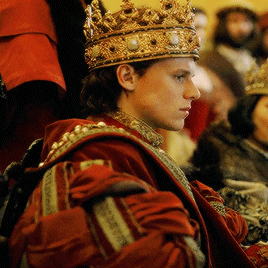


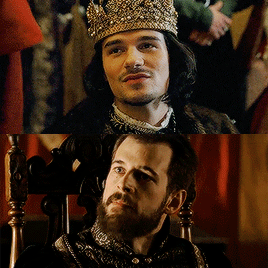
TUDOR WEEK 2023: Day 1: Favourite Tudor Rivalry
Henry VIII of England, Charles V, Francis I of France
'Despite appearances, [Henry VIII] had never really taken to Francis—who offered, apart from anything else, too much serious competition. For Charles, on the other hand—who was still only twenty—he felt a genuine affection. After his visit to England the young man had written a letter thanking him and Catherine warmly for their hospitality, and in particular for the advice Henry had given him “like a good father when we were at Cantorberi”; and it may well be that the King, who was, after all, already his uncle, did feel in some degree paternal—or at least protective—towards him. What seems abundantly clear is that Charles endeared himself not only to Henry but to all who were with him, in a way that Francis, with all his swagger, had completely failed to do.' (x)
#tudorweek2023#dailytudors#henry viii#francis i#charles v#historyedit#perioddramaedit#the tudors#historian: john julius norwich#my first tudor week!!#**
115 notes
·
View notes
Note
How do you know so much about 19th century France? Are there any resources (such as books and articles) you would recommend for learning about this time period?
Short answer: lots and lots of research, over time, in both long protracted chunks and small surgical lookups. When you read about 19th-century France this much, early on you have to stop every few minutes to look up what was happening at the Bastille or what have you, but after you've done that for a few years, you've built up a sort of sedimentary layer of accumulated knowledge. (Although of course I still get things wrong; I try but I'm not an actual historian!)
Here's a short reading list, although there are a ZILLION books out there that might be useful:
The Aesthetics of Reaction: Tradition, Faith, Identity, and the Visual Arts in France, 1900-1914 by Neil McWilliam (especially good for art movements)
Charles Garnier's Paris Opera: Architectural Empathy and the Renaissance of French Classicism by Christopher Mead
France: A History: From Gaul to de Gaulle by John Julius Norwich
How Paris Became Paris: The Invention of the Modern City by Joan DeJean
The Keys to French Opera in the Nineteenth Century by Herve Lacombe
Robe and Sword: The Regrouping of the French Aristocracy After Louis XIV by Franklin L. Ford
A Tour of French History: From a Province of Rome to the Kingdom of France by Pierre D. Bognon
These aren't all easy grabs off Amazon anymore, but try your local libraries and universities - that's where I found them!
#phantom of the opera#palais garnier#french history#anne pretends to be a real librarian#the phantom library
48 notes
·
View notes
Text
The modern historian John Julius Norwich wrote of Basil: "No lonelier man ever occupied the Byzantine throne. And it is hardly surprising: Basil was ugly, dirty, coarse, boorish, philistine and almost pathologically mean. He was in short deeply un-Byzantine. He cared only for the greatness of his Empire. No wonder that in his hands it reached its apogee".
jesus christ john
10 notes
·
View notes
Text
Sicily: An Island at the Crossroads of History. Chapters 1-3
This book was written by British historian John Julius Norwich. I will attempt to cover the chapters one at a time, other than this first installment, since the chapters are smaller.
1 Greeks The first true culture we encounter on Sicily is Mycenaean, from around 1600BC. Around 1400 BC, Sicily was absorbed into the Mediterranean trade routes. The Mycenaeans disappeared around 1200BC, no one knows why. There were some tribes that lived on the island: Sicans, Sicels, Elymians, but we know little of them.
Sicily's earliest historical period people were Greeks who had come over to colonize areas of the eastern and southern coast. The first Greek-Sicilian settlement was Gela around 688BC. The next centuries saw the cities build up through Greek art, philosophy, and civilization. But we must recognize that "Greece" was something like the way we consider "Arab" today. It was a concept more than a particular nationality.
The Carthaginians had a footing on the western edge of the island at Marsala and Trapani. Carthage was originally a Phoenician outpost. The Phoenicians were canaanites from the Old Testament. They were a seafaring people, who had established trading outposts all over the Mediterranean. Carthage, modern day Tunis, was one of those cities, which had gained independence in 650BC.
There were occasional clashes between the Greek cities with appeals to Carthage to intervene by whatever city saw itself as undermanned in the looming fights.
Around 400, an agreement was made between Syracuse and Carthage whereby Carthage would limit itself to the western portion of the island.
2 Carthaginians For the next hundred years, skirmishes continued between Greek Sicily and Carthaginian Sicily, but in 272, Rome captured Tarentum and effectively claimed control over the entire Italian peninsula. During the 200's Sicily was going to have to make a choice between Rome and Carthage.
There were a series of 3 Punic wars (wars between Rome and Carthage) fought between 264 and 146BC. During that time, Sicily became a Roman territory.
3 Roman, Barbarians, Byzantines, and Arabs. Roman By 241BC Sicily was essentially run by the Romans. The Greek speakers were still there, but Greece was in no position to influence much on the Island. Carthage was a power during the first part of the 200's, and indeed, Hannibal was causing all kinds of trouble on the Italian peninsula itself but, Carthage was not the influence on Sicily.
The Romans never considered Sicily more than a province... allies... but they were not considered citizens. The important fact was that Sicilians spoke Greek, not Latin. We know relatively little about the events on the island. But here are some 'highlights'... or lowlights... you can decide....
There were several slave revolts on the island. The slave population dangerously outnumbered the free, and they were terribly abused. (Good combo for an uprising.) The first slave war broke out around 139BC, Rome was slow to react since it didn't take the idea of slaves too seriously, and consequently wasn't put down until 132BC, seven years later.
A second slave war broke out in 104BC, but this time Rome was quicker to respond. The second war was ended in 100BC after an epic effort by the slaves.
Gaius Verrus was governor/criminal from 80-70BC, which saw the island suffer terribly under his pillaging. He was excoriated in the Roman Senate by Cicero, who took the case on himself, and Verrus, who saw the writing on the wall, packed up his stuff and amscrayed to Marseille before the trial ended and he was put under arrest.
The final transition of Rome from Republic to Empire left Sicily with a much larger Roman element than before. By decree, all mainland Italians had gained Roman citizenship, but this was not true for Sicily. 6 cities however were included, and their citizens were given Roman citizenship: Taormina, Catania, Syracuse, Tindari, Termini, and Palermo.
Sicily had become one of the most important sources of grain for the Roman empire.
Unfortunately, we know little of Sicilian history for the first 500 years of the Christian era. It seems to have prospered, as evidenced by the quality of the buildings that have survived from that period.
They were largely unconcerned by Constantine's decision to move the capital of the Empire to Constantinople in 330. They were largely unconcerned with the decision to move the western capital to Ravenna in 395.
Constantine's main contribution was the official status of Christianity, which spread rapidly across the island, replacing the old Greek religion.
By the 400's there also seems to have been a large influx of Jewish immigration.
Barbarian By the late 400s, the barbarians had arrived. Who you callin' barbarian?? I'm sure the barbarians didn't think they themselves were so deficient... after all, who just kicked who's @$$ on Rome's home field? The three "barbarian" tribes of interest to us are the Goths, Huns, and Vandals. Only the Vandals showed any interest in Sicily.
The Goths, under Alaric, had besieged Rome as early as 408.
The Huns attacked Italy by 452, but didn't get to Sicily.
The Vandals however, had gone across Gaul (france), settled in Spain, then crossed into North Africa, attacked Carthage and raided Sicily.
The Roman empire, these days, is considered to have finally succumbed in 476.
Byzantine In 533, Emperor Justinian launched a campaign to recover the western empire. His general, Belisarius, arrived in Sicily in 535, where he was universally welcomed by the Greek-speaking population. Sicily was once again an imperial province, ruled by a Byzantine governor, hooray! By the middle of the 600's, the Greeks were concerned for their western provinces because of the surge of Islam. Emperor Constans II decided that a Roman empire without a Rome was kind of pointless, so he wanted to shift his capital westward, but after actually seeing the dump that Latin Rome had become, he decided in 663 on the more familiar Greek atmosphere of Syracuse. This should be good for the Greek speaking Sicilians, right? The next 5 years were a nightmare for the Sicilians, due to the extortions and heavy taxes laid on them. This may have gone on for God knows how long, except in 668 Constans was assassinated. His son picked up again and moved back to Constantinople.
Arab Sicily had been left in peace for some time, but Arab raids were continuing. They now controlled the entire north African coast, and in 827, they invaded Sicily when a local governor, Euphemius, was ousted for an affair with a nun. He responded by proclaiming himself Emperor and then, realizing he didn't have enough muscle to actually make that happen, invited the Arabs to come help. The Arabs came, shoved Euphemius out of the way, and started a slow takeover for themselves.
Palermo fell in 830; Messina fell in 843; Syracuse in 878. By that time, Sicily was effectively an Emirate of the Muslim world.
The Muslim conquest made Sicily a major player in Mediterranean commerce. The Arabs introduced terracing and siphon aqueducts, they introduced cotton and papyrus, melon and pistachio, citrus and date palm and sugarcane. Muslim, Jewish, and Christians all thronged the bazaars of Palermo.
But stability was not part of Arab rule, and there were always tensions between the various factions.
3 notes
·
View notes
Text

A Short History of Byzantium - John Julius Norwich
This 384-page condensation of the original three-volume history gives readers a complete introduction to the direct descendent of the Roman Empire.
The book relates fascinating incidents about the main people, including an eyebrow-raising commentary on Empress Theodora’s early sex life, salaciously recounted by the contemporary historian Procopius. The book explains the famous differences over Church dogma, which characterize the Byzantines for us today, and which eventually drew even me into the fray: As I read along I found myself siding with the Iconoclasts and abhorring Norwich’s favoritism toward the icons. How strong Byzantium's mystique is, to cause people even now to take sides in its maddening disputes! The book provides a useful index, several maps at the front and an intricate imperial genealogy for those who dare.
The author is at fault in a couple of places. The photographs, set off in three sections, are black-and-white while their subjects, including Byzantine art, scream for color. The text itself runs through the empire’s 1100-year history and 88 emperors with an even tone that leaves readers unsure as to which events were decisive and which incidental to Byzantium’s fate. We learn that there were great thinkers in the empire, but not what they thought. In fact, the only real glimpse we get of who the Byzantines were and what they were made of comes at the end of the book, during the amazing last day of their existence. The author drops the ball again in his epilogue, which really should have explored Byzantium's legacy much more than it does in its one thin page.
The history of this empire is interesting enough in its own right to hold one’s attention, and Norwich does an adequate job with the material he uses. By no means is this a tedious account. It just doesn’t tell us quite what it could. Even in this abridged version, A Short History of Byzantium could have been a bit more engaging than it is.
0 notes
Photo

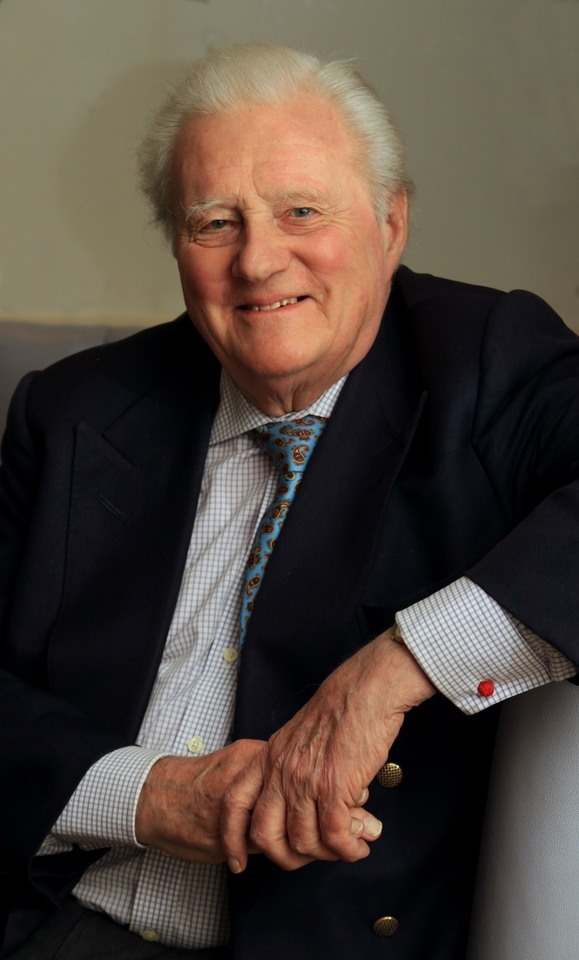

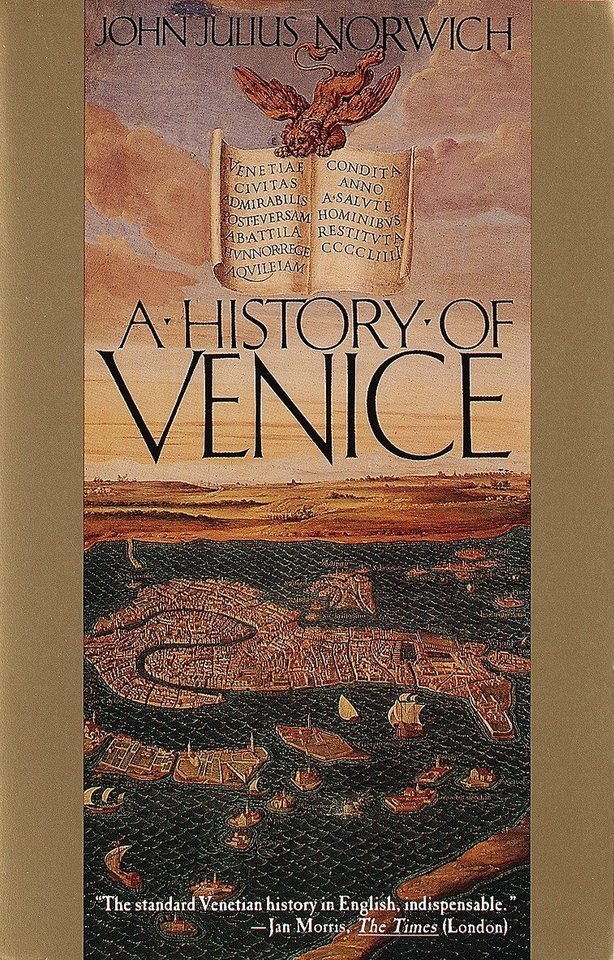
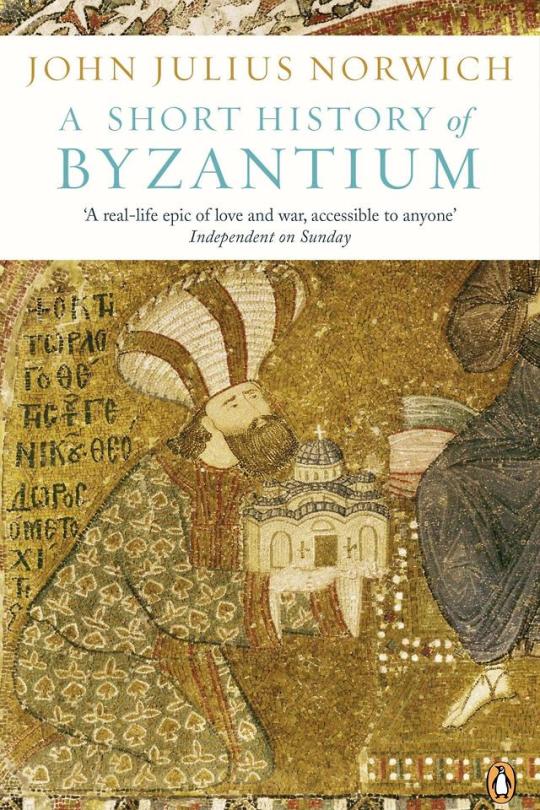
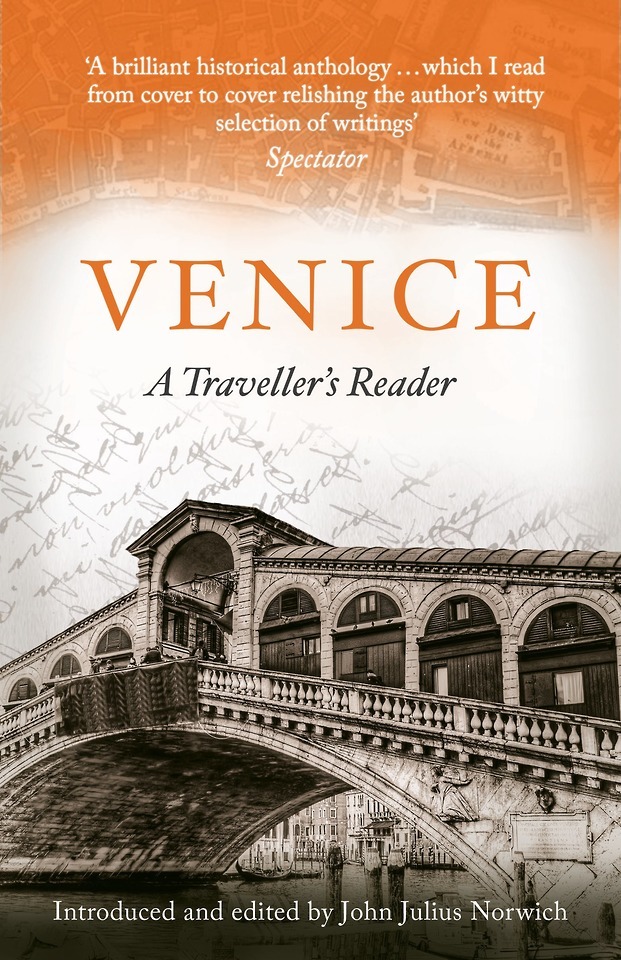



From Grove Atlantic and one of the great popular historians of our time, John Julius Norwich, A History of France.
#books#john julius norwich#a history of france#historians#france#french history#european history#nonfiction#grove atlantic#new books#new releases
12 notes
·
View notes
Photo
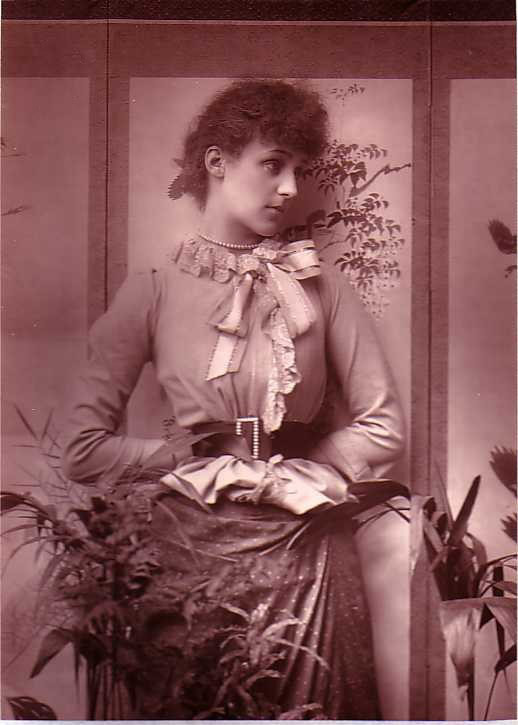
Marion Margaret Violet Manners, Duchess of Rutland (7 March 1856 – 22 December 1937) was a British artist and noblewoman. A granddaughter of the 24th Earl of Crawford, she married Henry Manners in 1882. She was styled the Marchioness of Granby from 1888 to 1906, when Manners succeeded as Duke of Rutland. She had five children, including the 9th Duke of Rutland and the socialite Lady Diana Cooper.
Though she had no formal training as an artist, the Duchess painted portraits of her social circle. Many of her works were displayed at various major art exhibits in the UK, including the Grosvenor Gallery, the Royal Academy of Arts, and the New Gallery. Violet was also a prominent member of The Souls, an aristocratic social circle that favoured intellectual pursuits and avant-garde artistic tastes. Known for her beauty, she was the subject of many paintings. Watts Gallery Trust acquired a beautiful Watts portrait of her in Dec 2016. Inspired by the acquisition, John Julius Norwich (a prominent historian and Violet's grandson) donated over 40 of Violet's own drawings, including a self-portrait and a portrait of Harry Cust. She became engaged in sculpting after the death of her elder son Robert in 1894.
#Violet Manners#XIX century#XX century#women in history#women in art#people#portrait#photo#photography
6 notes
·
View notes
Text
A great gout of symbolism
In the boredom of coronavirus isolation I’m working my way through some of the obscurer of the many books on my shelves I’ve ignored for many years. I’ve even made a little shelf of books to read in the bath, which include John Julius Norwich’s Christmas Crackers, 1970-79. The point of commonplace books is to copy things from other people’s into your own. And as a historian I do like to decode the symbolic politics of a public statue, particularly if as ridiculous as the one described here. So I make no apologies for reproducing this description of one of the statues of Rio de Janeiro from p. 76:
…there are plinths in some of Rio’s public places before which even the Philistine must bow; he may even go back to his hotel and lie down for a bit. There really is something alarming about these turgid and pullulating groups. A great gout … of legend, symbolism, religion, and political philosophy soars upwards and outwards from a base no bigger than your dining-table ...
Victory has got a half-Nelson on Liberty from behind. Liberty is … about half a ton, and also carrying weight in the shape of a dying President and a brace of cherubs. (One of the cherubs is doing a cartwheel on the dying President’s head, while the other, scarcely less considerate, attempts to pull his trousers off.) Meanwhile an unclothed male figure, probably symbolical, unquestionably winged, and carrying in one hand a model railway, is in the very act of delivering a running kick at two struggling ladies, from whose drapery on the opposite side an eagle is escaping, apparently unnoticed. Around the feet of these gigantic principals all is bustle and confusion. Cavalry are charging, aboriginals are being emancipated, and liners launched. Farmers, liberators, nuns, fireman, and a poet pick their way with benign insouciance over a subsoil thickly carpeted with corpses, cannon-balls, and scrolls. So vehement a confusion of thought, so arbitrary an alliance of ideas, takes the reason captive and paralyses criticism. But you cannot help feeling that such vigour of conception is hardly calculated to make for stability in execution; the thing must be top-heavy. You flinch. You tend to cower. It with a feeling of relief that you turn the corner of the square.
Peter Fleming, Brazilian Adventure (Northwestern University Press, 1999), pp. 60-1, originally published 1933.
I do wish I could find a picture of the original if still in situ, but if you search for statue and Rio de Janeiro on the internet all you get are a thousand pictures of Christ the Redeemer, a statue of quite a different ilk.
1 note
·
View note
Text
Islam’s Greatest Victory: The Fall of Constantinople, May 29, 1453
Today in history, on May 29, 1453, the sword of Islam conquered Constantinople.

Of all of Islam’s conquests of Christian territory, this was by far the most symbolically significant. For not only was Constantinople a living and direct extension of the old Roman Empire and current capital of the Christian Roman Empire (or Byzantium), but its cyclopean walls had prevented Islam from entering Europe through its eastern doorway for the previous seven centuries, beginning with the First Arab Siege of Constantinople (674-678).
When Muslim forces failed again in the Second Arab Siege of Constantinople (717-718), conquering the ancient Christian capital became something of an obsession for a succession of caliphates and sultanates. However, it was only with the rise of the Ottoman sultanate—so named after its eponymous Turkic founder, Osman (b.1258)—that conquering the city, which was arguably better fortified than any other in the world, became a possibility, not least in thanks to the concomitant spread of gunpowder and cannons from China to Eurasia. By 1400, his descendants had managed to invade and conquer a significant portion of the southern Balkans—thereby isolating and essentially turning Constantinople into a Christian island in an Islamic sea.
Enter Sultan Mehmet, or Muhammad II (r. 1451-1481)—“the mortal enemy of the Christians,” to quote a contemporary prelate. (Note: “Mehmet” is simply an English transliteration of the Turkish pronunciation of “Muhammad.”) On becoming sultan in 1451, Constantinople sent a diplomatic embassy to congratulate him; the 19-year-old responded by telling them what they sought to hear. He “swore by the god of their false prophet, by the prophet whose name he bore,” a bitter Christian contemporary retrospectively wrote, that “he was their friend, and would remain for the whole of his life a friend and ally of the City and its ruler Constantine [XI].” Although they believed him, Muhammad was taking advantage of “the basest arts of dissimulation and deceit,” wrote Edward Gibbon. “Peace was on his lips while war was in his heart.”
What was in his heart soon became apparent. Throughout the spring of 1453 the city watched helplessly as Ottoman battalion after battalion made its way to and surrounded Constantinople by land and sea. One contemporary remarked that Muhammad’s “army seemed as numberless as grains of sand, spread . . . across the land from shore to shore.” In the end, some one hundred thousand fighters and one hundred warships came.
...
The all-out assault was set for May 29. Atonement, ablutions, prayers, and fasting, “under penalty of death,” were ordered for the Ottoman camp the previous day. Fanatics of all sorts were set loose to inspire the men to jihad. Wandering “dervishes visited the tents, to instill the desire of martyrdom, and the assurance of spending an immortal youth amidst the rivers and gardens of paradise, and in the embraces of the black-eyed virgins [the fabled houris],” writes one modern historian. Criers swept throughout the camp to horn blasts:
Children of Muhammad, be of good heart, for tomorrow we shall have so many Christians in our hands that we will sell them, two slaves for a ducat, and will have such riches that we will all be of gold, and from the beards of the Greeks we will make leads for our dogs, and their families will be our slaves. So be of good heart and be ready to die cheerfully for the love of our [past and present] Muhammad.
Finally, on May 29, around two a.m., Muhammad unleashed all hell against Constantinople: to blasting sounds of trumpets, cymbals, and Islamic war-cries, cannon fire lit the horizon as ball after ball came careening into the wall. Adding to the pandemonium rang church bells and alarms. After the initial wave of cannon fire, the sultan implemented his strategy: “to engage successively and without halt one body of fresh troops after the other,” he had told his generals, “until harassed and worn out the enemy will be unable further to resist.”
On and on, wave after wave, the hordes came, all desirous of booty or paradise—or merely of evading impalement. With ladders and hooks, they fought, clawed, and clambered onto the wall. “Who could narrate the voices, the cries of the wounded, and the lamentation that arose on both sides?” recollected an eyewitness. “The shouts and din went beyond the boundaries of heaven.”
...
Thousands of invaders flooded in and slaughtered the outnumbered defenders; others were trampled underfoot and “crushed to death” by the press of men.
Crying, “The City is lost, but I live,” Emperor Constantine XI stripped and flung off his royal regalia and “spurred on his horse and reached the spot where the Turks were coming in large numbers.” With his steed he “knocked the impious from the walls” and with “his drawn sword in his right hand, he killed many opponents, while blood was streaming from his legs and arms.” Inspired by their lord, men shouting “Better to die!” rushed into and were consumed by the oncoming throng. “The Emperor was caught up among these, fell and rose again, then fell once more.”
Thus “he died by the gate with many of his men, like any commoner, after having reigned for three years and three months,” concludes a chronicler. And on that May 29, 1453, the 2,206-year-old Roman state died with him, and “the saying,” observed another contemporary, “was fulfilled: ‘It started with Constantine [the Great, who founded Constantinople, or “New Rome” in 325] and it ended with Constantine [XI].’”
Even so, by holding out against Islam for as long as it did—eight centuries—Constantinople had saved the West. After all, “had the Saracens captured Constantinople in the seventh century rather than the fifteenth,” observes historian John Julius Norwich, “all Europe—and America—might be Muslim today.”
Read it all at the link below:
18 notes
·
View notes
Text
Sulieman the New Justinian
One of the great historical phenomena we find is when major historical figures seek to identify themselves with other great historical figures from the past through various ways, such as through titles, symbolic gestures, and even through paintings. A fascinating example of this is found in the life of one of the Ottoman Empire's greatest sultans, Suleiman the Magnificent. When considering the most memorable points of Suleiman's reign as sultan of the Ottoman Empire from 1520-1566 we find four examples of actions and events which hearken back to the days of the Byzantine Empire and their, arguably, greatest emperor, Justinian the Great. Whether or not Suleiman deliberately sought to identify himself and his reign with Justinian's is a matter of speculation but the correlations are nonetheless intriguing.
The first point of interest lies in the marriages of both men. Both Justinian and Suleiman choose a bride for themselves that came from "less-than-royal" backgrounds. In 525 Justinian married a certain Theodora, who is described by historian John Julius Norwich as not being, "an ideal match. Her father had been a bear-keeper at the Hippodrome, her mother an acrobat - antecedents more than enough to debar her from polite society." Not only was Theodora's lineage considered vulgar but her own youth was considered "less-than-reputable", "while still a child Theodora had joined her elder sister on the stage, playing in farce and burlesque. Before long she had graduated to being Constantinople's most notorious courtesan." Due to her sensational past, Justinian was unable to marry her until his own mother, Empress Lupicina, had died since she considered Theodora origins and past too base. Suleiman's choice was likewise a controversial choice, not because of morally questionable past, such as in the case of Theodora, but due to her status of being a slave. In 1534 Suleiman married the Ruthenian slave-girl Hurrem Sultan (more popularly known as "Roxelana" in the West). This marriage was unprecedented, as in the evaluation of Caroline Finkel, "[Suleiman's] marriage to a freed slave was...a break with convention...[his] marriage to a concubine was shocking enough; his disregard for the one-mother-one-son norm still more so." Despite the popular evaluations of their wives both Justinian and Suleiman were deeply devoted husbands and both Theodora and Roxelana are known to have had considerable influence over their husbands, even in political affairs; Theodora is famous for her rousing speech to Justinian encouraging him not to flee Constantinople during the NIKA protests of January 13th 532 while Roxelana is notorious for her suspected involvement in convincing Suleiman that his oldest son Mustafa, born from another one of his concubines, was plotting against him; leading eventually to Mustafa's execution in 1553.
The next connection between Suleiman and Justinian lies in the scope of the Empires they ruled. Both men are associated with being the rulers of their respective empires at their geographical height. Both men are likewise associated with the expansion of their empires to their geographical height. Justinian's reign is marked by his program of "reconquest" in attempts made by him to retake former territories of the Roman Empire. During his reign, Justinian waged campaigns in Northern Africa, Italy, and Hispania (among others) which brought Justinian's empire beyond being an expression of an "eastern" Roman empire. Suleiman, following the precedence of his forefathers - such as Mehmet II and his father Selim I, likewise expanded his empire through a number of military campaigns. Some of Suleiman's greatest conquests included the taking of Belgrade from the Kingdom of Hungary, the conquest of Baghdad against the Muslim Safavids, as well as the annexation of huge Muslim territories in North Africa.
Another fascinating echo of Justinian in the life of Suleiman is his Ottoman title "the Lawgiver" (rather than his Western title "the Magnificent"). Suleiman is known especially for his work in updating the law-code of the Ottoman Empire as well as formulating new law-codes for the newly acquired territories of his empire. Suleiman's grand legislative work, carried out by Sheikhulislam Ebussuud, was, "a revision and amplification of those [law-codes] of Mehmed II and Bayezid II, containing legislative principles for the empire as a whole on matters such as the regulation of the provincial cavalry forces, taxation...and the affairs of the minority population." This work of updating Ottoman law-codes was not only a revision of laws previously promulgated by the sultans of the past but was also a harmonization between the secular laws and the Islamic religious laws. This dual work of updating imperial law and its harmonization of religious law was also a staple of Justinian's reign. Just as Suleiman carried out his project through Ebussuud so too had Justinian carried out his juridical project through a jurist named Tribonian. In Tribonian, "Justinian found the one man capable of bringing a long-cherished dream to fruition. This was a complete recodification of the Roman law, removing all repetitions and contradictions, ensuring that there was nothing incompatible with Christian teaching."
A final similarity between the two men is found in their ambitious building projects. Justinian is arguably most known for the construction of the church of Hagia Sophia when considering his architectural achievements. During the NIKA revolts, the original church was burned down and Justinian took it upon himself to rebuild the church in greater grandeur than the predecessor. Upon its completion, the cathedral of Hagia Sophia was considered to be the largest building of its time and a marvel of engineering with its enormous central dome, 107 feet across and 160 above the pavement. Tradition has it that when Justinian entered the church for the first time, "[he] stood for a long time in silence before being heard to murmur: 'Solomon, I have surpassed thee.'" Alongside Justinian Suleiman too is known for his construction of religious buildings. While Justinian, as a Christian, was known for his magnificent churches Suleiman, as a Muslim, became known for his mosques. Perhaps the most well known of Suleiman's mosques is the one that bears his name, the Suleymaniye in Constantinople. Just as Hagia Sophia was the most ambitious building project of Justinian's architects so too was the Suleymaniye the largest design of Suleiman's chief architect. The design and size of the Suleymaniye are likewise similar and reminiscent of Hagia Sophia; in fact, it's considered to be the second-largest Mosque in Istanbul right behind Hagia Sophia (which had been converted into a Mosque after Mehmet II's conquering of Constantinople in 1453). Upon its completion, there are whispers that Suleiman uttered the very same words that Justinian had said, marveling and the glory of Hagia Sophia when he entered the mosque for the very first time.
Between these historical circumstances, we can see hints of Suleiman being presented by history as a new Justinian. This would be in fact be quite fitting since the Ottomans considered themselves the inheritors of the Byzantine Empire since their conquest of Constantinople. If an Ottoman sultan wanted to portray himself as being the greatest sultan of the empire it's perfectly reasonable that he may want to draw upon the legacy and image of Justinian to give his own reign an image of greatness. While the lives of Justinian and Suleiman aren't completely identical nonetheless the similarities in marriage, conquest, law, and architecture are intriguing and from these correlations, we can see Suleiman as a new, Islamic, Justinian in a sense. While one's preference for Justinian or Suleiman will largely depend on one's religious convictions (as an Orthodox Christian I make no denial that my own religious convictions place my own personal bias towards Justinian or St. Justinian, as he is remembered in the Orthodox Church) at the very least these similarities can be recognized between them. In calling Suleiman a new Justinian we need not insinuate that Suleiman was greater than Justinian, though no doubt those who hold the Muslim faith would believe so, but rather that since Suleiman's reign bears a certain resemblance to Justinian's, and since Suleiman's reign comes later historically - 1000 years later, in fact, he can be stylized as a new Justinian.
(All quotations regarding Justinian taken from John Julius Norwich's "A Short History of Byzantium" while all quotations regarding Suleiman are taken from Caroline Finkel's "Osman's Dream")
4 notes
·
View notes
Text
john julius norwich is a pretty bad historian
1 note
·
View note
Text
Italy's cheating heart
Italy’s cheating heart
An email I recently got an email from one of my readers with an interesting question. After reading a book by British historian and aristocrat John Julius Norwich, she thought that she might have to worry about the Mafia. My reader is thinking about buying a house in Sicily, and a flippant throwaway line from Norwich suggested to her that the Mafia might approach her to pay protection…
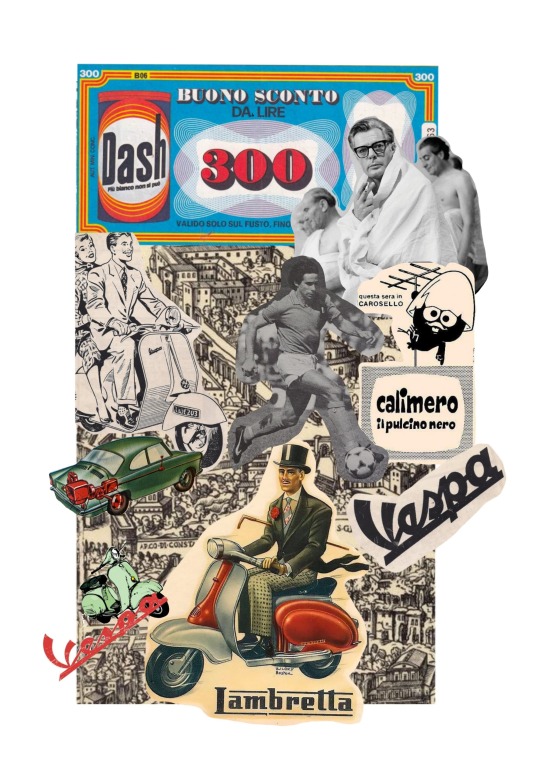
View On WordPress
#About the Mafia#An email from a reader#Duplicity of character#Expat problems#Frustration of fraud#How safe is Sicily#Is Sicily safe#Mafia#Really bad karma#Truth about living in Sicily#Why is Sicily famous for Mafia
0 notes
Photo

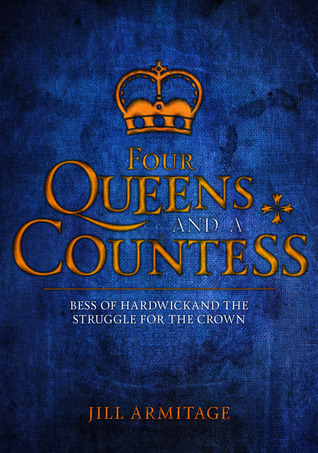


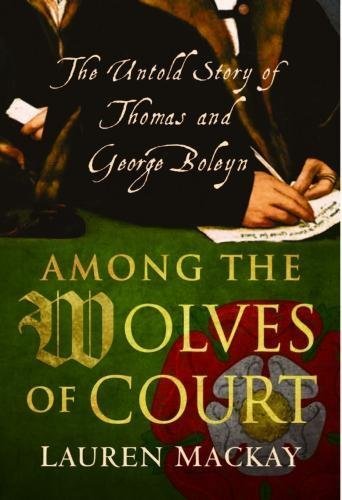
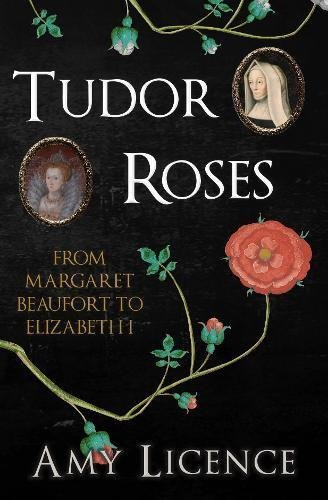
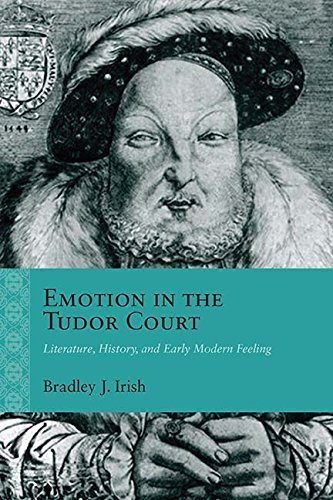
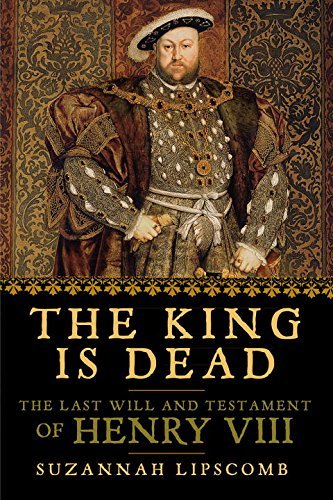
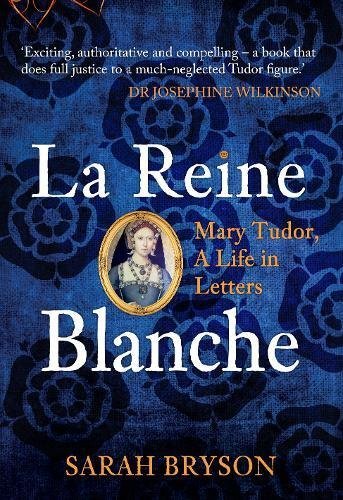
New and Forthcoming Tudor Releases
Late 2017 and the 2018 year
Black Tudors: The Untold Story by Miranda Kaufman (U.K October 5th North America November 7th): From long-forgotten records, remarkable characters emerge. They were baptized, married and buried by the Church of England. They were paid wages like any other Tudors. Their stories, brought viscerally to life by Kaufmann, provide unprecedented insights into how Africans came to be in Tudor England, what they did there and how they were treated. A ground-breaking, seminal work, Black Tudors challenges the accepted narrative that racial slavery was all but inevitable and forces us to re-examine the seventeenth century to determine what caused perceptions to change so radically.
Four Queens and a Countess: Mary Queens of Scots, Elizabeth I, Mary I, Lady Jane Grey and Bess of Hardwick: The Struggle for the Crown by Kill Armitage (U.K December 15th North America May 1st 2018) Four Queens and a Countess delves deep into the relationships of these women with their insurmountable differences, the way they tried to accommodate them and the lasting legacy this has left. The clash of personalities and its deadly political background have never been examined in detail before.
The Brothers York: An English Tragedy by Thomas Penn (September 27th 2018) Brothers York is the story of three remarkable brothers, two of whom were crowned kings of England and the other an heir presumptive, whose antagonism was fuelled by the mistrust and vendettas of the age that brought their family to power. The house of York should have been the dynasty that the Tudors became. Its tragedy was that it devoured itself.
Four Princes: Henry VIII, Francis I, Charles V, Suleiman the Magnificent and the Obsessions that Forged Modern Europe by John Julius Norwich (U.K July 13th North America April 13th 2017) From the Field of the Cloth of Gold, a pageant of jousting, feasting and general carousing so lavish that it nearly bankrupted both France and England, to Suleiman's celebratory pyramid of 2,000 human heads (including those of seven Hungarian bishops) after the battle of Mohács; from Anne Boleyn's six-fingered hand (a potential sign of witchcraft) that had the pious nervously crossing themselves to the real story of the Maltese falcon, Four Princes is history at its vivid, entertaining best. Among the Wolves of Court: The Untold Story of Thomas and George Boleyn by Lauren MacKay (U.K April 30th 2018 North America June 30th 2018) In this ground-breaking new book, Lauren Mackay reveals this untold story of Tudor England, bringing into the light two pivotal characters whose part in the rise and swift fall of Anne Boleyn has so far remained cloaked in shadow. Tudor Roses: From Margaret Beaufort to Elizabeth I by Amy Licence (U.K May 15th 2018) Without exception, these were strong women, wielding remarkable power, whether that was behind the scenes or on the international stage. Their contribution took England from the medieval era into the modern. It is time for a new narrative of the Tudor women: one that prioritises their experiences and their voices. Emotion in the Tudor Court: Literature, History, and Early Modern Feeling by Bradley J. Irish (January 15th 2018) Spanning the sixteenth century, Emotion in the Tudor Court explores Cardinal Thomas Wolsey and Henrician satire; Henry Howard, Earl of Surrey, and elegy; Sir Philip Sidney and Elizabethan pageantry; and Robert Devereux, Earl of Essex, and factional literature. It demonstrates how the dynamics of disgust,envy, rejection, and dread, as they are understood in the modern affective sciences, can be seen to guide literary production in the early modern court.By combining Renaissance concepts of emotion with modern research in the social and natural sciences, Emotion in the Tudor Court takes a transdisciplinary approach to yield fascinating and robust ways to illuminate both literary studies and cultural history. The King is Dead: The Last Will and Testament of Henry VIII by Suzannah Lipscomb (January 9th 2018) Henry's will is one of the most intriguing and contested documents in British history. Historians have disagreed over its intended meaning, its authenticity and validity, and the circumstances of its creation. As well as examining the background to the drafting of the will and describing Henry's last days, Suzannah Lipscomb offers her own illuminating interpretation of one of the most significant constitutional documents of the Tudor period Illustrated with portraits of the key figures at Henry's court. La Reine Blanche: Mary Tudor, A Life in Letters by Sarah Bryson (U.K February 15 2018 North America June 1 2018) Author Sarah Bryson has returned to primary sources, state papers and letters, to unearth the truth about this intelligent and passionate woman. This is the story of Mary Tudor, told through her own words for the first time.
206 notes
·
View notes
Note
Top 6 books of any genre :)
Hmmm. I’m going to cheat a bit by going with series. Also, these aren’t in any particular order
1. John Julius Norwich’s history of the Byzantine Empire (three volumes) - easy to read and a great introduction to the subject. Also helps dispel many of the (generally negative) myths about the Empire from earlier historians.
2. GRRM’s A Song of Ice And Fire - the quality is inconsistent and the man needs an editor, but I still love the universe, its characters and stories.
3. The Rogue and Wraith Squadron books (Star Wars). Not great literature by any means, but great characters and lots of good storytelling from the Star Wars universe from a more grounded perspective. Also one of my favorite romances (Corran/Mirax!)
4. Richard J. Evans’ trilogy on the rise, rule and fall of Nazi Germany, especially his first book (The Coming of the Third Reich), which delves into the various factors that contributed to its rise, as well as intrawar Germany and the reactions from different political and social groups. Lots of good insight into the politics of it, too, especially regarding the failure of governmental institutions to halt the party’s rise and of competing political parties to unite in opposition to it.
5. Michael L Lewis - Moneyball. I love baseball. I love my A’s. I love this story (even If it’s incomplete/doesn’t tell the whole story) of how my A’s competed despite enormous financial disadvantages.
6. Margaret MacMillan - Paris 1919: an immensely readable (if relatively brief) overview of the peace conference in Versailles. Gives a lot of insight into how relatively small personal disputes, misunderstandings and biases shaped the treaty and its discussions and contributed to later problems (even if those consequences did not manifest for quite some time).
I have a LOT of history books I have really enjoyed, although I'm still branching out into areas/periods I've neglected.
5 notes
·
View notes
Photo

John Julius Norwich, 2nd Viscount Norwich
#2nd Viscount Norwich#john julius norwich#travel writer#historian#artemis cooper#Allegra Huston#portrait
0 notes
Text
A Stack of Books for the Season: Summer Reading List for 2017
David McCullough once told of Teddy Roosevelt during his time in the Dakota Territory and before his arrival on the world scene. Two thieves who had been on something of a crime spree in the territory had stolen Roosevelt’s rowboat, and he was determined to chase them down and arrest them. He chased the thieves for 40 miles of rough landscape, through deep snow and in constant danger of attack, and indeed brought them to justice. McCullough then tells the reader: “But what makes it especially memorable is that during that time, he managed to read all of Anna Karenina. I often think of that when I hear people say they haven’t time to read.”
Theodore Roosevelt was a very determined man and a (clearly) determined reader. Anyone who reads Tolstoy in the midst of a foot chase after robbers in the Badlands gets my vote for gold medalist in the reading competition. With the arrival of warm weather, most of us are able to turn to a stack of books that had to wait for summer. The following is my list of ten recommended books for summer reading. This list must be seen for what it is — a recommendation of ten books I am eager to recommend — books that I found thought-provoking and fun. My summer list tends, quite naturally, to reveal what I most enjoy reading in the season. As usual, the list is weighted towards history and historical biography. I have a big stack of fiction for the season as well. Those books, along with Anna Karenina, will have to wait for another list. Enjoy.
1. John Julius Norwich, Four Princes: Henry VIII, Francis I, Charles V, Suleiman the Magnificent, and the Obsessions that Forged Modern Europe (Atlantic Monthly Press, 2016). By the time I read the subtitle of this book, I was already hooked. Why hadn’t anyone written a book like this before? It took John Julius Norwich, a skilled writer and historian, to bring these four great princes who dominated the sixteenth century together into one story. Perhaps at no other time in history did four rulers of this stature reign together, and their reigns and ambitions were constantly in conflict. Their personalities were massive, the political (and theological) stakes were never higher, and their stories are compelling. The cast of characters includes sultans and knights, multiple wives and warriors, a series of disastrous popes, and the reformer Martin Luther. Norwich, author of well-regarded books including Byzantium, summons the past and leaves the reader wanting to know even more.
Excerpt:
When Suleiman succeeded to the Ottoman throne at the age of twenty-five, he was already an experienced ruler. At fifteen he had been appointed Governor of Caffa in the Crimea, a major trading post where he had remained for three years; subsequently his father, the aptly named Sultan Selim the Grim, had appointed hims Governor of Istanbul. But it had been an unhappy time: eight years during which Selim had instituted a reign of terror. He had been intelligent and cultivated enough — some of his verses are, we are told, among the loveliest in all Ottoman poetry — but he seemed to conceive of government solely in terms of executions. When he had dethroned (and subsequently murdered) his own father, Bayezit II, in 1512, his first act on his succession was to have his two young brothers and five orphan nephews strangled by the bowstring. Thus it was that, by the time of his succession, Suleiman was the only male member of this entire family left alive.
2. Tom Clavin, Dodge City: Wyatt Earp, Bat Masterson, and the Wickedest Town in the American West (St. Martin’s Press, 2017). Understandably, but regrettably, most Americans know what they think they know about the American West from movies and television. Furthermore, many of the early books written about Dodge City and figures like Wyatt Earp and Bat Masterson were about as fictional as Gunsmoke. I grew up watching Gunsmoke with my grandfather, and Marshal Dillon was my hero. The good news is that the real story of the West is actually even more interesting, if also more complicated, than the stories Hollywood told. Tom Clavin is not an academic historian, but he is an accomplished writer and a former reporter for The New York Times. He knows how to chase down a story, and Dodge City is a great example of journalistic history. A few years ago, friends took me out to Melody Ranch, Gene Autry’s old movie set in the rural hills outside Los Angeles. I realized then that I was walking on the set where almost all of the westerns of my boyhood had filmed. They just changed the signs on the storefronts. I felt let down. Readers looking for a story that is bigger than life and still hard to pin down will not be let down by Dodge City.
Excerpt:
There was no police force when things got out of hand. The nearest law enforcement was seventy-five miles to the north, in Hays City. And cowboys were not the only problem. Buffalo City was renamed Dodge City — it would not be a formally incorporated city for another three years — and was on the edge of the frontier, a place that for a variety of reasons drew thieves, drunks, deserters, guerrillas still trying to relive the looting and pillaging days of the Civil War, and others with a price on their heads. All this put Dodge City in the late summer of 1872 on the precipice of being a totally lawless town. It was inevitable that murder was one of the crimes committed…. Within a year fifteen men had been murdered, with the bodies being hauled up to the new cemetery, Boot Hill, for burial. It was into such lawless and dangerous surroundings that Bat Masterson, still a teenager, first arrived in Dodge City. Wyatt Earp would find this way there too, and eventually both young men would be given badges and a mandate to tame a town on the brink of violent chaos.
3. Giles Milton, Churchill’s Ministry of Ungentlemanly Warfare: The Mavericks Who Plotted Hitler’s Defeat (Picador, 2016). Winston Churchill is remembered as perhaps the largest character on the landscape of the twentieth century, and he is most remembered for his courageous leadership of Britain and the entire free world during the dark years of World War II. Of course, he is also remembered for his brave and costly role in warning Britain and the West of the looming Nazi challenge when the leadership class was awash in dishonesty and denial. Less remembered is the fact that Churchill was an early proponent of mechanized warfare and saw the tank as the determinative land-based weapon. Even less known is his role in commissioning and supporting his unofficial “Ministry of Ungentlemanly Warfare” during the war. Churchill knew that the long battle against Hitler would have to be fought on every level, and that would mean sabotage, espionage, and innovation in deadly weaponry. The operation, referred to as “Baker Street” due to its location in London, was a directorate of the dark arts of war. The brilliant inventors of Baker Street would develop bombs and instruments that would prove crucial to the war effort, but were decidedly “ungentlemanly.” They used what they could find. At one point, looking to develop a delayed fuse for an important bomb, the inventors finally landed on a hard candy melting in liquid as the perfect delayed fuse. When the liquid threatened to dampen the fuse itself, they figured that a condom would serve as protection. Then the inventors bought up all the hard candy and condoms in a nearby English village, the locals assumed that a team of candy-chewing playboys had invaded. Actually, it was a team of inventors and technicians who would help Britain and the Allies to defeat the Nazis. Milton’s book will also remind readers that most characters found in fiction are based in a real life or lives. Those familiar with Ian Fleming’s character “Q” from the James Bond series will see that Fleming had plenty of inspiration from Winston Churchill’s Ministry of Ungentlemanly Warfare.
Excerpt;
“Before he left, Winston Churchill had requested that he collect one example of every weapon produced by the team. These were to be saved for the nation and given to the Imperial War Museum where they would be put on special display. Churchill was anxious that the efforts of Jefferis’s workforce should have some sort of public recognition. Macrae set to the task with as much enthusiasm as he could muster, handing over limpets, sticky bombs and any number of booby traps. But it was all to no avail. None of them went on display, and nor was there to be any mention of MD1 in the museum’s exhibits about the war. ‘We created an establishment which contributed more to the war effort than any other weapons design department,’ said Macrae. But it was an establishment so ungentlemanly in its outlook that it was to be for ever erased from history.'”
4. Craig Shirley, Reagan Rising: The Decisive Years, 1976-1980 (Broadside Books, 2017). This is Craig Shirley’s fourth book on Ronald Reagan and his presidency, and probably the most unlikely. In Reagan Rising, he tells Reagan’s story from his razor-close loss to President Gerald Ford for the 1976 Republican nomination to his landslide election as President of the United States in the 1980 election. But Shirley also tells the story of Reagan’s intellectual and political development — in many ways Reagan in 1980 was different from the Reagan of 1964 or 1976. Shirley also lays out the redefinition of the Republican Party and the transformation of the American political landscape. I worked as a teenage campaign volunteer in the 1976 Reagan campaign, responsible for enlisting South Florida high school students in the Reagan cause. It was in the course of that campaign that I met Ronald Reagan and saw him in unscripted moments before a campaign event as well as behind the podium. I knew then that Ronald Reagan was a man of ideas, passionately held. I knew the outlines of the story from 1976 to 1980, but Craig Shirley now offers the definitive narrative of those years in Reagan Rising. Readers will understand today’s political landscape far better after reading this book.
Excerpt:
“Running for president is never easy, and it was especially hard for Ronald Reagan, as he had not just the usual obstacles to overcome, but also those of the skeptics in his own party and a very hostile and malicious national media. He had a halfhearted attempt in 1968, ran full out in 1976, and even more so in 1980. But then, he was a fully formed American conservative. Many times, however, he heard from critics in the GOP establishment that he was ‘just an actor.’ But as he wisely said later, in the waning days of his presidency, after being asked if he’d learned anything in Hollywood that helped him to be a good president, ‘I’ve wondered how you could do this job and not be an actor.’ …. Reagan remains one of the most fascinating figures of history and the American presidency, in part because he was a constantly evolving individual. his worldview in 1964 was not his worldview in 1980. his conservatism had changed, from simply being against the intrusions of government to the more positive advance of individual freedom.”
5. Sean McMeekin, The Russian Revolution: A New History (Basic Books, 2017). There was more than one Russian revolution in 1917, of course, but we remember that year in Russia as the tumultuous and radical transformation of Russia from the autocracy of the Romanov dynasty to the dictatorship of the Communist Party. As Sean McMeekin reveals, it was a descent from one circle of hell into yet another. The centennial of the fall of the Romanov’s and the rise of the Soviet Union comes with the centennial of America’s entry into World War I and the birth of John F. Kennedy. It was a pivotal year from the old world into a new world. McMeekin is a professor of history at Bard College. The Russian Revolution is the best history of the Bolshevik Revolution to emerge in recent decades, and McMeekin made skillful use of newly available archives to prove a major point missed by many others — that Imperial Germany largely funded Vladimir Lenin. The story of Russia in 1917 is riveting and important. The Russian Revolution: A New History is the best new work that tells that story and does not hide its bitter lessons.
Excerpt:
“The crazy twists and turns of the Russian Revolution should give us pause in drawing pat historical lessons from it. Far form an eschatological ‘class struggle’ borne along irresistibly by the Marxist dialectic, the events of 1917 were filled with might-have-beens and missed chances. The most critical mistake of the tsarist government was the decision to go to war in 1914, a decision warmly applauded by Russian liberals and pan-Slavists but lamented by conservative monarchists. For this reason, it is hard to fault Nicholas II for refusing to take liberal advice during the war, to surrender power to ambitious politicians who had already shown poor judgment. Strange as it may seem to modern sensibilities that the tsar preferred the counsel of the peasant faith healer Rasputin to that of the elected Duma leaders such as Rodzianko, the fact is that, had he listened to Rasputin instead of Rodzianko in 1914, he might have died peacefully on his throne instead of being butchered by the Bolsheviks in Huy 1918.”
6. David McCullough, The American Spirit: Who We Are and What We Stand For (Simon and Schuster, 2017). Just write it down: Everything written by David McCullough deserves a place on your reading list. In The American Spirit, McCullough brings together fourteen speeches and addresses he delivered between 1989 and 2016, and each is an experience unto itself. The first address, “Simon Willard’s Clock,” was delivered to a Joint Session of Congress. The last, “A Building Like No Other,” was delivered to the U.S. Capitol Historical Society. David McCullough is a rare combination of historian and orator. The only thing better than reading one of his addresses (or books) is hearing it. He loves this country and he loves its stories, but he is also a historian who understands that the stories must be told well, and honestly. The American Spirit reveals a deep reverence for the institutions and values of democratic self-government. Those who doubt the power of a spoken address to move a modern audience need only to read this book. I hope they will.
Excerpt:
“The lessons of history are manifold. Nothing happens in isolation. Everything that happens has consequences. We are all part of a larger stream of events, past, present, and future. We are all beneficiaries of those who went before us — who built the cathedrals, who braved the unknown, who gave of their time and service, and who kept faith in the possibilities of the mind and the human spirit. An astute observer of old wrote that history is philosophy taught with examples. Harry Truman liked to say that the only new thing in the world is the history you don’t know. From history we learn that sooner is not necessarily better than later . . . that what we don’t know can often hurt us and badly . . . and that there is no such thing as a self-made man or woman. A sense of history is an antidote to self-pity and self-importance, of which there is too much in our time. To a large degree, history is a lesson in proportions.”
7. Daniel Mark Epstein, The Loyal Son: The War in Ben Franklin’s House (Ballentine Books, 2017). How many Americans know that Benjamin Franklin had an acknowledged illegitimate son, who served as royal Governor of New Jersey and remained a loyalist to the end, dying in London, estranged from his father, one of the most famous of the American Founding Fathers? Too few. As you do already know, truth is so often stranger than fiction. In 1776, Ben Franklin, already one of the most famous of Americans, would loom ever larger as an American patriot. That same year, his son, William Franklin, would be arrested for treason. Given their opposing commitments in the Revolutionary War, the likely question was which would hang for treason, father or son? Any story like this — epic in scale and yet personal in scope — requires a careful telling. Daniel Mark Epstein tells the a story of Ben and William Franklin with care and pathos. Along the way readers will gain insight into the larger canvas of the American Revolution and the emerging shape of the British Empire. The story of William Franklin is undeniably tragic, but it is also fascinating.
Excerpt:
“Benjamin would have liked to see his son follow him in the printer’s trade, but the boy declined. If he could not go to sea, he was hell-bent on being a soldier, and in no time he proved he was good at it. At sixteen he enlisted in the king’s army; by eighteen he had distinguished himself, having risen to the rank of captain during King George’s War. In the seemingly endless war with France, the enemy and her allies (various Indian tribes) engages in gruesome raids upon the settlements of the New England borders, and in battles on the high seas. French-led Indians burned Saratoga in 1745 and murdered trappers and British patrols in Albany in 1746. William marched north to Albany and wintered there with his company under severe and dangerous conditions, with rusted guns, spoiled beef, and cutlasses so soft they would bend and stay bent like wax. Sixteen British soldiers were killed in a single Indian ambush. While dozens deserted, William Franklin stood his ground, and he volunteered to join a march on French forces at Saratoga. He came home briefly in May 1747, as a captain charged with hunting down deserters and hauling them back to camp. Captain Franklin, seventeen years old, discharged his duty with a zeal and efficiency his father admired.”
8. Thomas E. Ricks, Churchill & Orwell: The Fight for Freedom (Penguin Press, 2017). Elegantly written and powerfully told, Churchill and Orwell is the story of two men who, while extremely different in background, temperament, fame, and fortune, are rightly joined together as among the greatest defenders of freedom in modern times. Thomas E. Ricks, author of The Generals, recognizes that Churchill and Orwell are, in the traditional sense of biography, a mismatched pair. Churchill was born to the British aristocracy and was catapulted to fame at a very young age. From his early twenties until his death, there is hardly a day in Churchill’s life that was not documented in some way. Not so for George Orwell. Eric Arthur Blair, who took the pen name George Orwell, was born in India and grew up in Britain in the hardships of the working class. They were politically opposed on many questions, but to focus on their political differences is to miss the story that Thomas Ricks tells — the story of two men, each gifted with a powerful command of the English language, who would in their own way fight the great war against tyranny in the twentieth century. Orwell and Churchill would become two of the most powerful enemies of both fascism and communism in their times. Readers of Churchill and Orwell will be reminded of the truth that ideas have lasting consequences indeed. The inheritors of freedom in our day are deeply indebted to both.
Excerpt:
“When they were confronted by a crucial moment in history, Churchill and Orwell responded first by seeking the facts of the matter. Then they acted on their beliefs. They faced a genuinely apocalyptic situation, in which their way of life was threatened with extinction. Many people around them expected evil to triumph and sought to make their peace with it. These two did not. They responded with courage and clear-sightedness. If there is anything we can take away from them, it is the wisdom of employing this two-step process, especially in times of mind-bending crisis: Work diligently to discern the facts of the matter, and then use your principles to respond. . . . We should remember that most of us, most of the time, do not welcome the voices of people like Orwell and Churchill appearing in our midst. Most of us, when confronted with a crisis, do not dive into the matter. Rather, we practice avoidance.”
9. Lynne Olson, Last Hope Island: Britain, Occupied Europe, and the Brotherhood that Helped Turn the Tide of War (Random House, 2017). Part of this story is fairly well known — that in the darkest days of World War II and the Nazi threat, London became Europe’s headquarters for freedom. Heads of state and national leaders of various stripes all headed to London, hoping to enlist others in the cause of liberty for their nations and the defeat of Hitler. Less known are the unmatched personal stories within this larger story. Lynne Olson, author of one best-selling book about London in the war, Citizens of London, now gives us another compelling read. The chapters read like spy thrillers, which several are. The cast of characters she narrates is vast and variegated, from Queen Wilhelmina of the Netherlands, brave but infuriating to her hosts, to Norway’s King Haakon VII, tragically proved right in his warnings of the Nazi menace. There are many more, with their stories. Last Hope Island revises our memory of World War II and how a unified Allied front came to be headquartered in London, a beacon of freedom — and a last hope indeed — for much of Europe.
Excerpt:
“In the predawn hours of May 10, 1940, Queen Wilhelmina of the Netherlands gently shook her daughter awake. ‘They have come,’ she told Princess Juliana. This time, the early morning invaders arrived from the air. They dropped by the thousands over bright green polders and fields ablaze with red and yellow tulips, over steeples and windmills, over orange-tiled roofs of peaceful Holland. Awakened by the roar of aircraft overhead, the Dutch, many still in nightgowns and pajamas, poured form their homes and peered upward. While milkmen distributed their wares door-to-door and housewives headed to market, german parachutists were landing in country gardens and city streets. To some of the children looking on, it seemed like a fascinating new game. Queen Wilhelmina knew otherwise. Like King Haakon, she had been warning her government for years of the growing danger of Hitler and Germany, but, as in Norway, government officials paid no heed to their monarch.”
10. Thomas Oliphant and Curtis Wilke, The Road to Camelot: Inside JFK’s Five-Year Campaign (Simon and Schuster, 2017). I fully expected that the centennial of John F. Kennedy’s birth on May 29, 1917 would mean the release of at least one major new biography of America’s 35th president. Surprisingly, that was not the case. Furthermore, most of the more recent books on Kennedy and his administration have been disappointments. The best books are at least a decade old by now. In The Road to Camelot, Thomas Oliphant and Curtis Wilke offer something different than a personal biography of Kennedy. They give us the biography of a presidential campaign, indeed, of what may well be called the first modern presidential campaign. Both of the authors were longtime reporters at The Boston Globe, and they have worked this story thoroughly. They remind us of Kennedy’s effort to gain the vice presidential nomination in 1956, but trace his determination to win the White House to at least 1955. An undistinguished legislator, Kennedy put himself forward as a presidential candidate and as the vanguard of a new generation. Oliphant and Wilke trace the political strategies and alliances that led to Kennedy’s capture of the Democratic nomination and his razor-thin victory over Richard Nixon in the 1960 election. Kennedy’s victory in 1960 was by no means a sure thing. Had the political winds blown even slightly differently between 1956 and 1960, JFK’s political career might have ended in the Senate. It didn’t, of course, and The Road to Camelot is the best telling yet of John F. Kennedy’s road to the White House and the emergence of the modern media-driven presidency.
Excerpt:
“One reason Kennedy decided to move forward is that it was the only direction his fortunes could go. In the mid-1950s he was not a consequential figure in national politics. Even after nearly a decade in Congress he was considered more of a socialite and a war hero than a political leader. He had no developed philosophy or ideology, and his Senate contemporaries considered him an indifferent Democrat with occasionally independent tendencies. He was not involved prominently in any great cause or issue, and enjoyed no real standing inside the Senate. He was not even the undisputed master of politics in his home state. He was nowhere near the top of any list of Democrats to watch. When assessing him as a politician, the word commentators used most frequently was potential, not power.“
The post A Stack of Books for the Season: Summer Reading List for 2017 appeared first on AlbertMohler.com.
Go to the article
0 notes